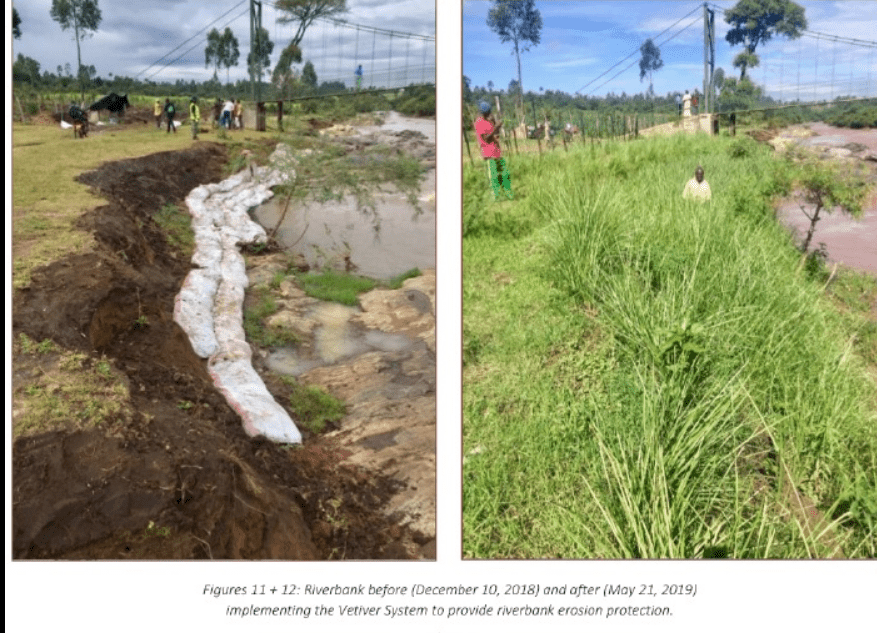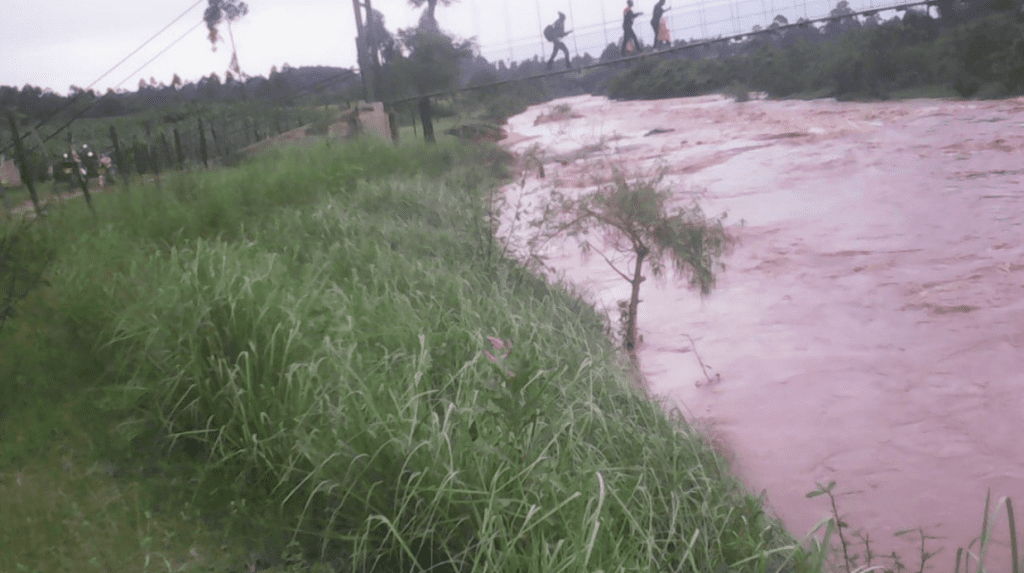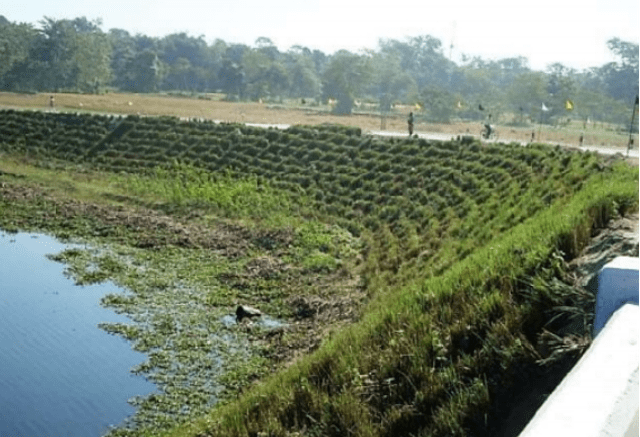Bridges (including culverts)
Introductory photo Essay VS_Bridge_Approach.pdf (vetiver.org)
The interface of soil, concrete and water is always a point of structural weakness unless the soil is protected and stabilized. This is particularly the case with the intersection of roads bridges, culverts, and other concrete structures when associated with rivers, drains in canals. VGT provides an excellent solution to assure that bridge apartments do not wash away.
Vetiver has deep, penetrating and extensive root system that binds the soil, and reinforces the soil structure which requires extraordinary force to dislodge.
• Erect and stiff stems forming a dense hedge which is very effective in retarding water flow and reducing the erosive power of the strong current.
• The top portion of the vetiver plant is flexible and bends over under strong flow. The bent tops act as an energy dissipater.
Bridging the Gap in Kenya – Peace Bridge – KEN_Vetiver – peace bridge.pdf



